Chris Grinter, on April 19th, 2011
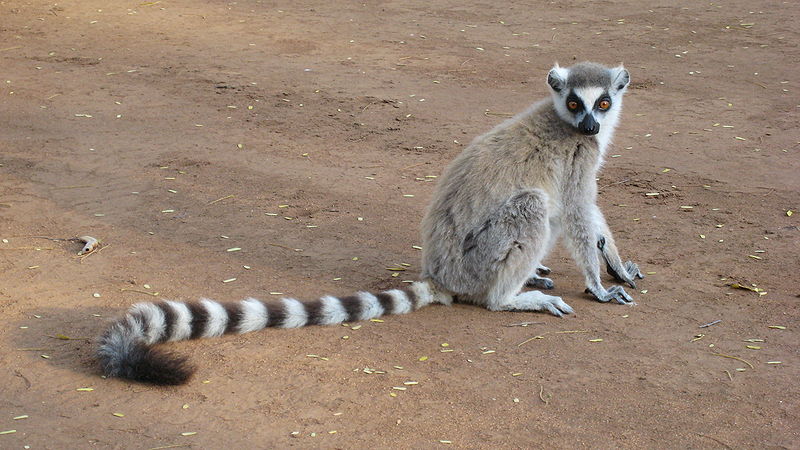 Šaltinis: Vikipedija Pasirodo, Richardas Bransonas turi naują idėją; kad išgelbėtų žieduodegį lemūrą (Lemur catta) pagal importuodamas juos į savo privačią Britų Mergelių salą. Kaip nurodoma straipsnyje, Bransonas išleido milijonus svarų ir metų pastangas paversti salą “ekologiškiausia sala pasaulyje”. Tačiau atrodo, kad ponas Bransonas nusprendė atsisakyti gamtosaugos mokslo ir perrašyti jį į viešuosius ryšius palankesniu būdu.. Ateis lemūrai, nepaisant jo paties ekologinio vertinimo įspėjimų, nes jis nori “…sukurti antrą salos buveinę, o sąlygos Moskite yra puikios.” Galbūt Bransonas turi keistą pasaulio žodyną, kuriame yra žodžio tobulas apibrėžimas “kažkas visiškai nepanašaus į originalą”.
gerai žinoma, iš pradžių idėja skamba kaip gera – lemūrams gresia pavojus, kodėl gi nepabandžius suteikti jiems antrą laukinį prieglobstį? Gerai, Daktaras Jamesas Lazellas iš Apsaugos agentūros 31 metų patirtį Mergelių salose ir nurodė tai “Lemūrai yra judrūs, gudrus, agresyvus, visaėdžiai gyvūnai, kurie gali turėti žalingą poveikį šioms paprastoms salų ekologinėms sistemoms. Jie valgo absoliučiai viską – driežus, vaisių, šaknys, vabzdžių, paukščiai’ kiaušiniai.” O, bet nesijaudink, nieko blogo negali nutikti, kai į salą supažindinsi primatus (introdukuoti primatai nusiaubė Floridą). Bransonas žino, kad tik lemūrai “imk keistą gekoną” (kaip retas endeminis nykštukas-gekonas Sphaerodactylus partenopija), jau nekalbant apie tai, kad jie greičiausiai neišplis į kitas salas “nekenčiu plaukimo” (žiedo uodegos lemūro plaukimas).
Tai kam tada žiedas? Ne todėl, kad jam gresia didžiausias pavojus (yra daug kitų labiau nykstantys lemūrai), bet todėl, kad jis yra pats ikoniškiausias. Dėl šios juokingos idėjos mane tikrai verčia į viršų. Jis ne tik naiviai įveda galbūt invazines rūšis į jautrią salos buveinę – bet todėl, kad jis skleidžia klaidingą išsaugojimo žinią. Kaip lėtas vaikas, Bransonas puolė prie žiedo uodegos, kad jį išgelbėtų, tačiau visiškai neprarado visos išsaugojimo idėjos.. Žieduodegė yra pavyzdinė rūšis, kuri atkreipia dėmesį į Madagaskare vykstančius niokojimus. Vienas mielas glostomas gyvūnas, vaizduojantis stulbinančiai unikalias ir įvairias jo tėvynės buveines. Bet ne, jei Richardas Bransonas turi ką apie tai pasakyti. Kam nerimauti saugoti Madagaskarą, kai gali įsiveržti ir sukurti naujus namus visų mylimam primatui? pfu, krizė išvengta. Ričardas smuikuoja, kol Madagaskaras dega.
Įtariu, kad šis keistas salos zoologijos sodas tiesiog prisistato kaip gamtosaugos objektas, o tikroji paskata už jo yra komercinė. Per ateinančius kelerius metus bus keletas “prabanga, saloje pastatytų anglies dvideginio neutralių namų”. Gana puiki schema, skatinanti pirkti namus, kurių kiekvienas neabejotinai kainuos dešimtis milijonų dolerių – ir jūs galite apsimesti, kad gerai jaučiatės saugodami pasaulį. Juk Mergelių saloms trūksta charizmatiškos laukinės gamtos; gamta tikrai atlieka siaubingą darbą kurdama milijardierių stebuklų šalį. Kas yra šalia salos?
Gal būt… tik gal… Bransonas turi dr. Moreau įsikelia pirmas.
Chris Grinter, on April 18th, 2011 A few weeks ago I was invited to join a Berkeley entomology class out in the field for the weekend. Our destination was the Blue Oak Ranch draustinis; one of the newest reserves to the University of California system located just outside of San Jose on Mount Hamilton (map below). It was a joint spider and beetle class trip, hosted by Charles Griswold ir Dave Kavanaugh respectively. And despite a frost on Saturday night we managed to find some interesting insects. You’ve already seen my images of the Scaphinotus (Carabidae), but here is a larger set of images from both myself and colleague and fellow blogger Tamas Szuts.
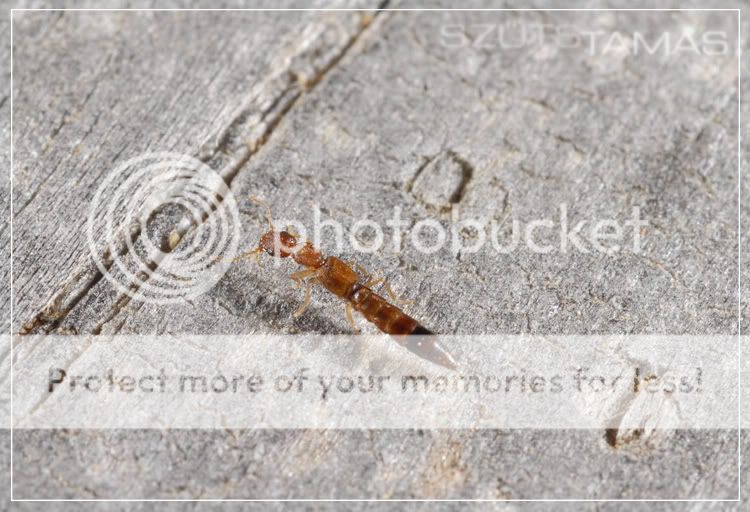 Staphylinidae: Aleocharinae? 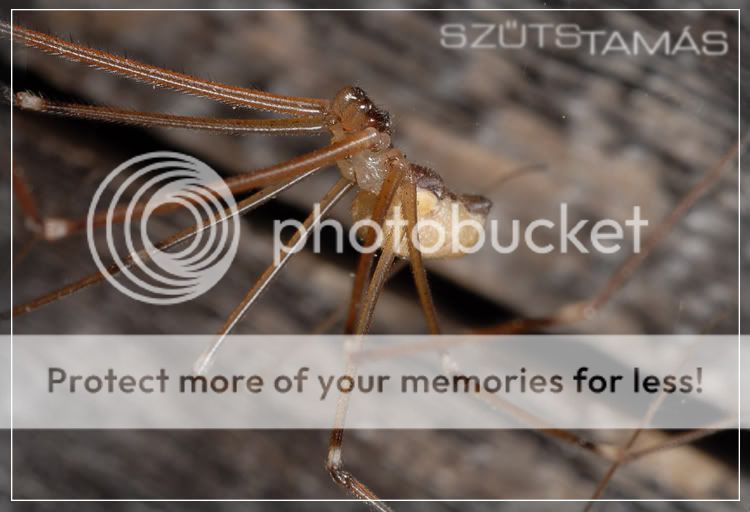 Pholcidae : likely Pholcus sp. 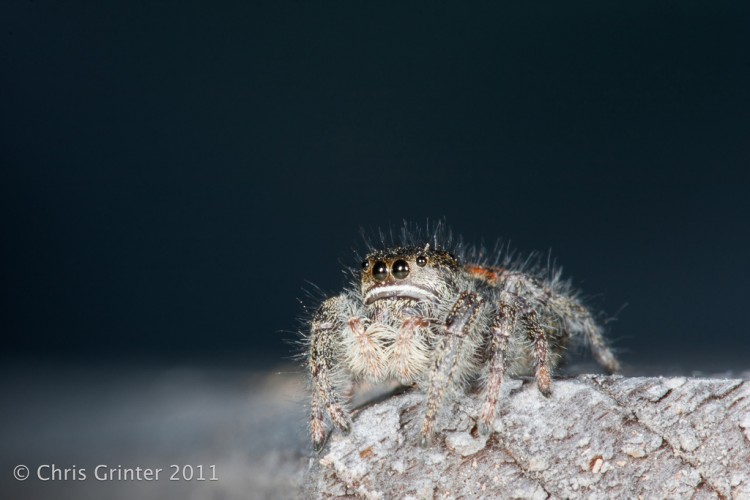 Salticidae: Phidippus sp. Continue reading Blue Oak Ranch Reserve
Chris Grinter, on April 6th, 2011 Gerai – a few apologies for not having full images *yet* of the larvae in question (I will in a few days!). Over the weekend I was out with a group of Berkeley students on Mount Hamilton and PhD candidate Meghan Culpepper collected a few species of Scaphinotus and a some larvae! So the specimen from Monday was indeed the larvae of a Scaphinotus beetle feasting inside the shell of a native terrestrial snail. This challenge was a hard one since these predatory Scaphinotus larvae are rarely encountered and there are zero images of out there – and none of them feeding. Better luck next time!
For now, here is an undetermined Scaphinotus species. In the coming weeks I will have 4-5 species photographed and identified (by Meghan) – and the larvae will have to be sequenced for species ID. Stay tuned.
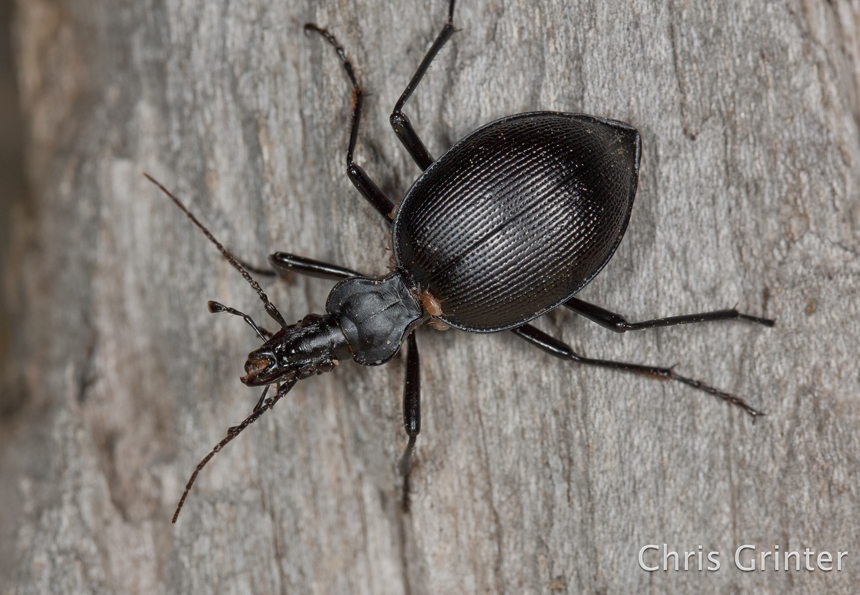
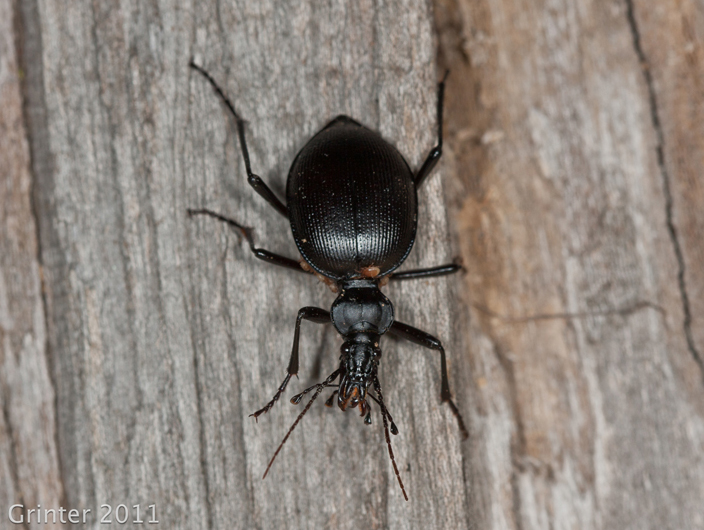
Chris Grinter, balandžio 4 d, 2011 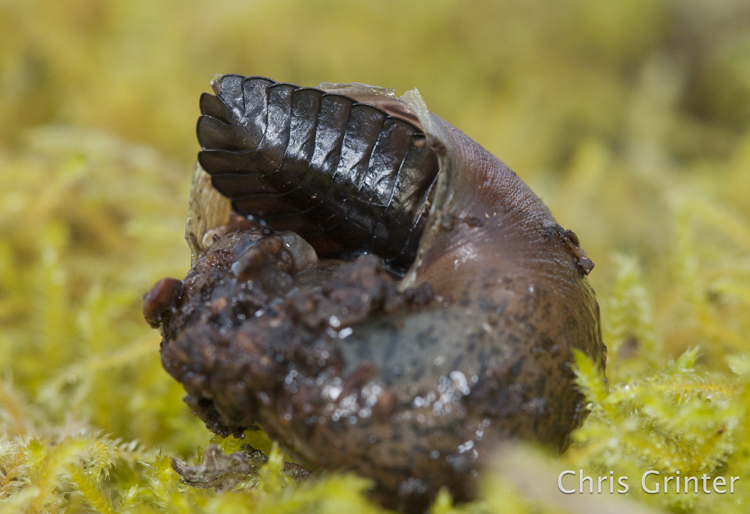
Kitą dieną sutikau šį vaikiną lauke, kas čia vyksta? Taškai skiriami už ordiną / šeimą / gentį – tačiau net šios grupės ekspertai dar negali tiksliai išsiaiškinti rūšies.
(visi, dirbantys su manimi, turėtų komentuoti, kol spėlios!)
Chris Grinter, kovo 30 d, 2011 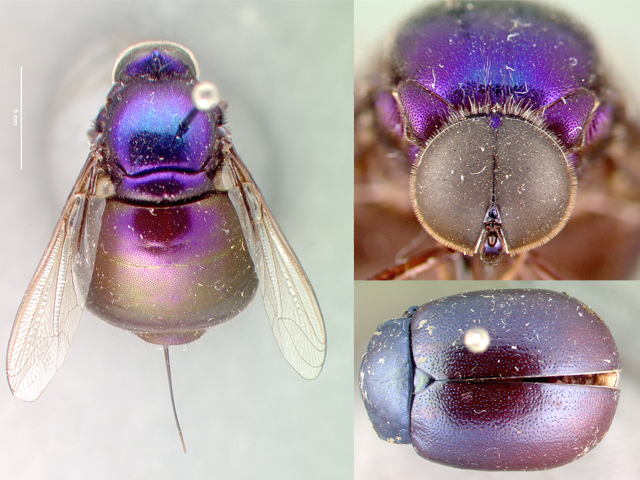 Lasia klettii: Nuotraukos April Nobile, CASE Lasia klettii: Nuotraukos April Nobile, CASE
Daugeliu atvejų musės nėra vabzdys, dėl kurio aš per daug jaudinuosi. Tačiau, mįslinga Acroceridae šeima yra išimtis. Kartkartėmis pradėsiu dalintis įdomiomis rūšimis – šeimos morfologija stebėtinai įvairi. Didžiąją dalį mano dienų praleidžiu muziejuje inventorizuodamas mūsų didžiulę kolekciją 16,000 Acorcerids (dar žinomas kaip mažagalvės musės). Palyginus su kitomis gausesnėmis šeimomis, tai gali atrodyti ne taip įspūdingai (ir jis išblyškęs, palyginti su per 17,500,000 kitas egzempliorių, kuriuos turime muziejuje); bet pasirodo, kad jis atstovauja daugeliui, jei ne dauguma, apie visi žinomi visai šeimai egzemplioriai. Nors kitose įstaigose greičiausiai yra didelių šių musių rinkinių, Kalifornijos mokslų akademija gali lengvai pretenduoti į rekordą nuo tada, kai gavo Dr. Evertas I. ritinys (kuris retkarčiais užsuka dirbti iš muziejaus).
Pasirodo, akrokeridai yra gana sunkiai tiriama grupė, nes gamtoje jie yra reti, jų parazitoidinė biologija, ir kaip sunku juos pagauti ant sparno. Didelė jų krūtinė pilna raumenų, kurie skrieja musę oru – taigi, jei nepagauni jų prie gėlės, liksi pasiilgęs negalavimo spąstų. Ev papasakojo man vieną istoriją, kaip išmokau juos gaudyti ant sparno Kosta Rikoje. Jūs stovite pavėjui nuo kolegos lauke – kai tik kas nors išgirs, kad kažkas prasilenkia, pašėlusiai siūbuojate, tikėdamiesi atsitiktinai sugauti musę… kartais tai veikia. Šios musės taip pat yra vieninteliai žinomi suaugusių vorų endoparazitai (gali būti įrašas apie Tachinidą…). Aukščiau nurodyta gentis, NeoLazija, yra Theraphosid tarantulas parazitas (kažkas kaip Afonopelma). Kaip lerva musė kyla voro kojomis aukštyn ir įsirauna į pilvą, kur tada įsitaiso šalia knygos plaučių ir išduria nedidelę kvėpavimo angą.. Tada kantriai laukia, kol voras subręs. Su moteriškomis tarantulais, musė gali miegoti dešimtmečius. Galiausiai nutinka kažkas panašaus į filmą „Ateiviai“, o lervos minta voro vidaus organais, tada išnyra lėliukės.. Tačiau išsiaiškinti, ar voras turi parazitų, neįmanoma be skrodimo – todėl norint gauti šeimininkų įrašus, reikia išlaikyti dideles gyvų vorų kolekcijas. Parazitoidinė biologija yra tokia šauni.
Aukščiau pateiktas pavyzdys (Lasia klettii naujas, neįvardytas, rūšis) buvo surinkta 1977 prie Šlingerio netoli Alamos miesto, Meksika – ant gėlių su galimu imitaciniu modeliu, Chrysomelidae vabalas (vabalų žmonės, bet kokios idėjos už šeimos ribų?).
Chris Grinter, on March 24th, 2011 Better be careful of what you do while out in the countryside. Farms can be dangerous places, especially if you’re a photographer. Proposed legislation in Florida, titled simply “farms”, is attempting to make photography or drawings in, on or apie a farm without explicit written consent a first degree FELONY (up to 30 years in prison). What could possibly be the justification for this legislation? Journalist Barry Doyle suggests the good Senator is tightly in the pockets of Agribusiness – looking out for those poor farmers who are targeted by animal rights groups or even worse – human rights groups! I tend to concur, this legislation is a disgusting piece of corruption. It gets pretty bad:
(2) A person who photographs, video records, or otherwise produces images or pictorial records, digital or otherwise, at or of a farm or other property where legitimate agriculture operations are being conducted without the written consent of the owner, or an authorized representative of the owner, commits a felony of the first degree…
I strongly encourage any of my Florida readers to write to Senator Norman and express your absolute disgust in his legislation.
14031 N. Dale Mabry Blvd.
Tampa, FL 33618
(813) 265-6260
Senate VOIP: 41200
I also encourage everyone else everywhere else to write to your US representative and exclaim your outrage over this possible violation of first amendment rights (only a proposed violation at this moment).
And just for good measure, here is a bad cellphone picture I took while in Oregon with lots of farms.
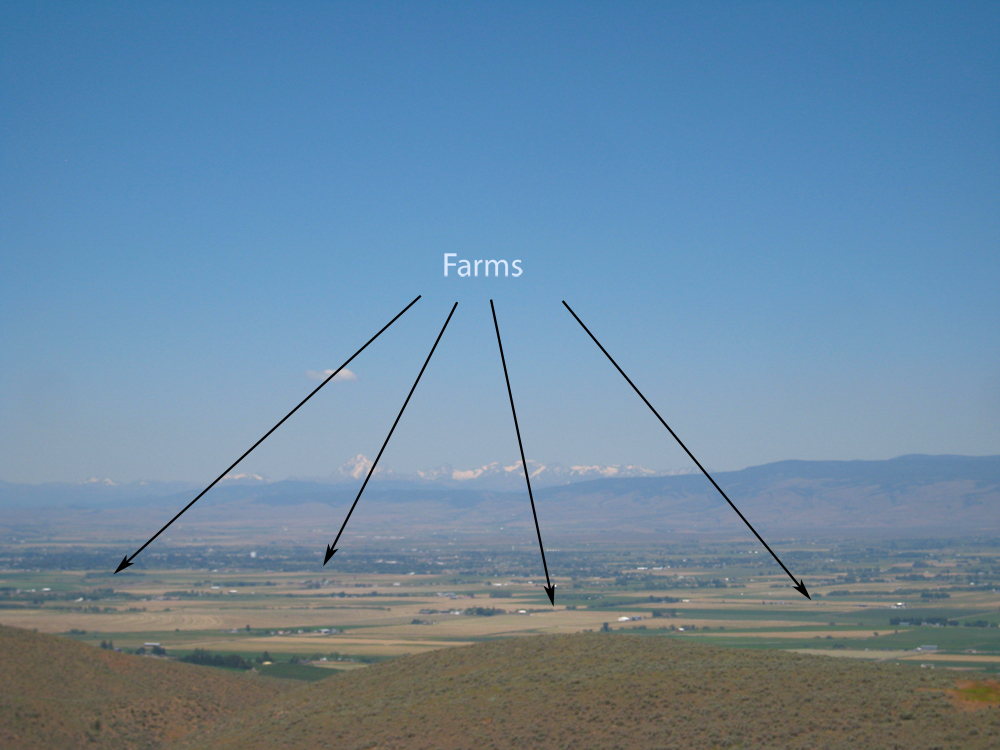
Chris Grinter, on March 22nd, 2011 Usually I come across horrible entomology articles regularly enough that I save a backlog for future series. This hasn’t been the case over the last few weeks, I haven’t come across the normal array of terrible media crud. Maybe I just get jaded and stop looking as carefully – but this week I even came across a moth related correction from the Maui News. They fixed their error, but must have deleted the original article…
And for this week I found Šis straipsnis with the image below. Should be pretty easy to spot the weirdness (they do at least manage to point out that the moth is ne the LBAM (light brown apple moth)).
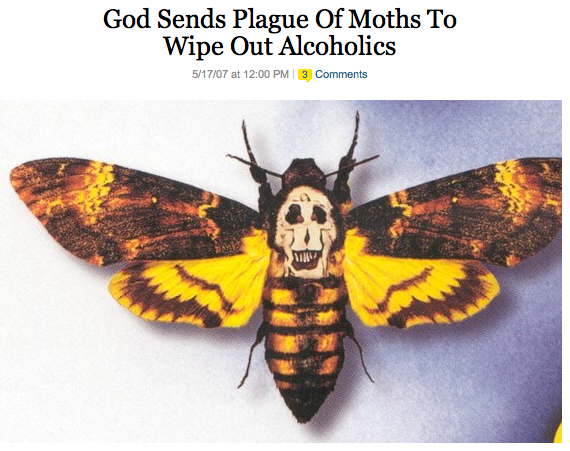
Chris Grinter, kovo 18 d, 2011 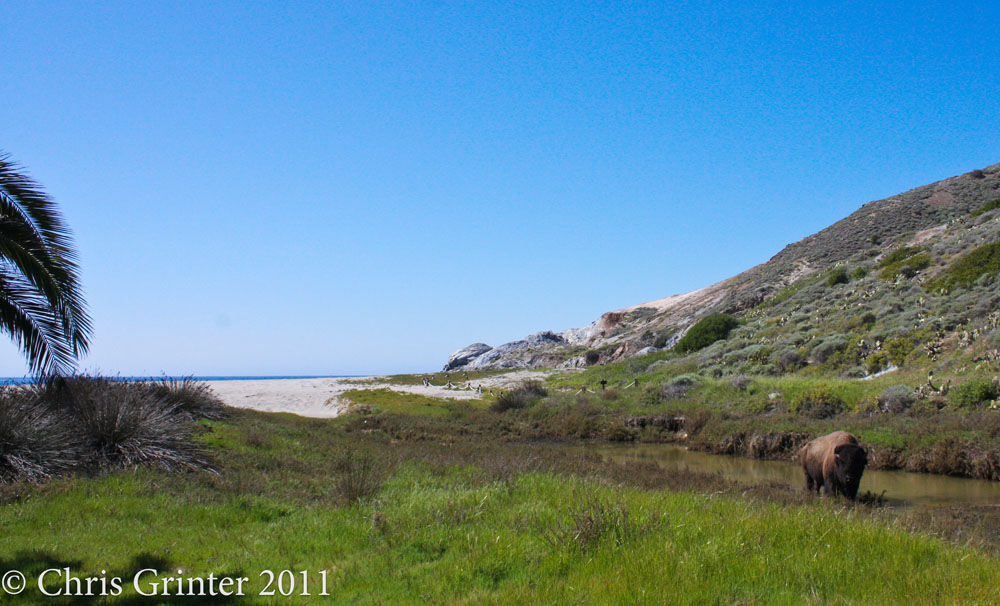
Galbūt vienintelė vieta pasaulyje, kur galite rasti Bizonas (vs. buivolas) stovi šalia paplūdimio, šalia palmių. Nuo Santa Catalina savaitę buvo nuostabus vienas, ir, nepaisant šalto pavasario su keletu nesavalaikis šalnų, kai padorus rinkti buvo padaryta. Here are just a few amusing images and you’ll notice one thing right away: no fields of wildflowers! As it turns out, almost a century of goat, pig and bison grazing has left mostly grass and cactus on the island. At one point there were over 1000 bison and countless herds of goats; it’s a wonder anything survived at all! Šiandien, there are thankfully only a modest ~200 bison left that are even on birth control (you guessed it, you can’t shoot the damn things since people “love” them – just like the stupid eucalyptus you can’t cut down). Į 1924 a small heard of bison were brought over to shoot the movie The Vanishing American. natūraliai, the project went over budget, the scene was cut and the animals were let loose instead of paying to return them home. 80 years later and you’re left with an island you can only fight to “conserve” and not restore. Sad fact is that we have no clue what the island actually used to be like. It’s even hypothesized that the endemic island fox (of which we saw 6!) was brought over by indigenous peoples a few thousand years ago from neighboring islands. I guess it’s in our nature to mess with our environment.
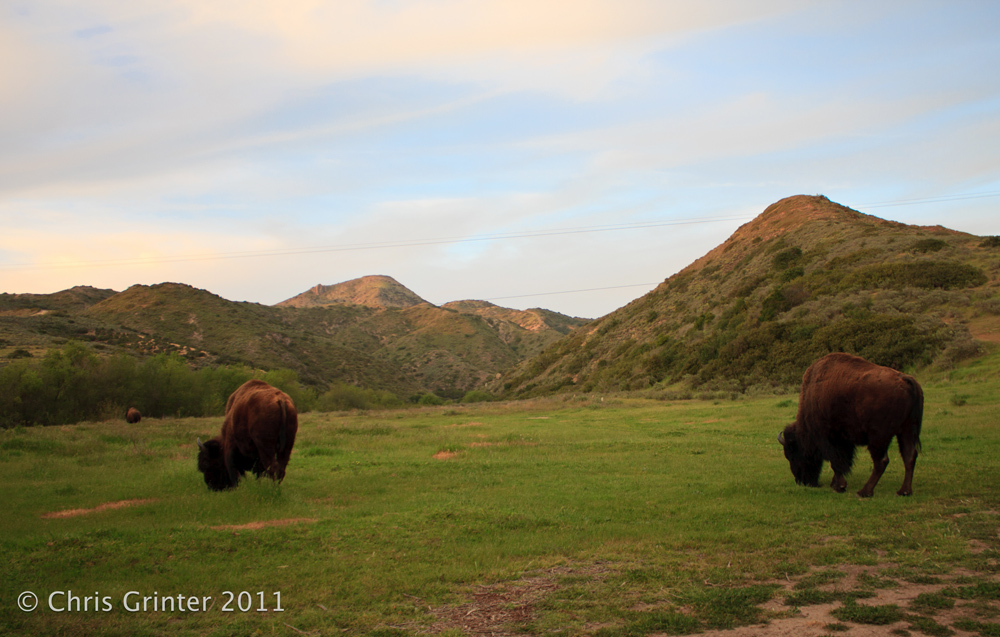
As I was photographing the above, this beast walked up behind me. It wasn’t running, I was!
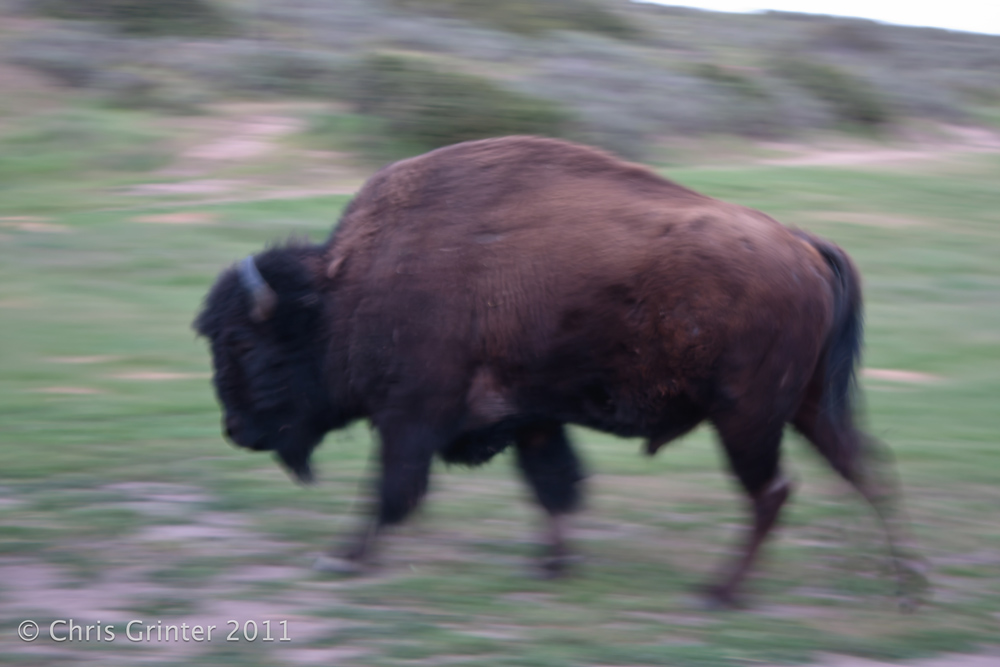
Chris Grinter, apie 8 kovas, 2011 [cetsEmbedGmap src=http://maps.google.com/maps?ll=33.393039,-118.416824&spn=0.359452,0.715485&t=h&z=11 width=600 height=330 marginwidth=0 marginheight=0 frameborder=0 scrolling=auto]
Tomorrow morning I’m off for a 10 day collecting trip down to Catalina Island. I’ve been lucky enough to be invited to join Dr. Jerry Powell of UC Berkeley on a moth survey, and this will be my first time to any of the islands. The Channel Islands are known for their high levels of endemism, and none is more famous than the Channel Island Fox. There are also a handful of endemic butterflies and moths that I’ll be hoping to find, but at the very least I know it’s wildflower season and I’ve got my camera primed.
I will likely have little or no access to the internet while staying on the island, so hang tight for a week. Had I planned ahead I would have scheduled posts or a guest author! Please do stay tuned for some of my first images of the 2011 field season.
Chris Grinter, apie 3 kovas, 2011 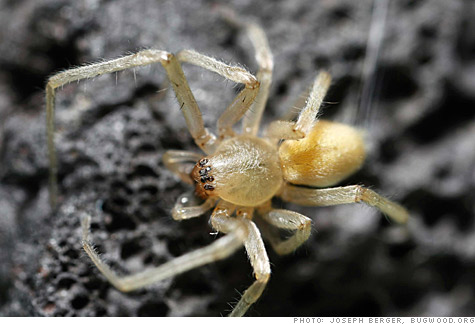
Matyt something in the Mazda 6 fuel line is warm and inviting for the yellow sac spider, enough so that they are building webs over the vent systems of the 4 cylinder vehicles (and not the 6!). The problem has been deemed a “spider infestation” by the car company, and the clogged vent lines then can lead to a cracked gas tank and the possibility of a fire.
“A certain type of spider may weave a web in the evaporative canister vent line and this may cause a restriction of the line”
So far only 20 cases are confirmed, but this problem is prolific enough that it has lead to a recall of over 52,000 sedans! I think it’s high time the major car companies hire entomology consultants – after all, my retainer would be a lot less than the cost of that recall…
I consulted with our resident team of arachnologists here at the CASE, and the above image does appear to be a sac spider. It’s too hard to tell from the image, but it’s probably not an egregious taxonomic failure.
|
Skepticizmas
|














